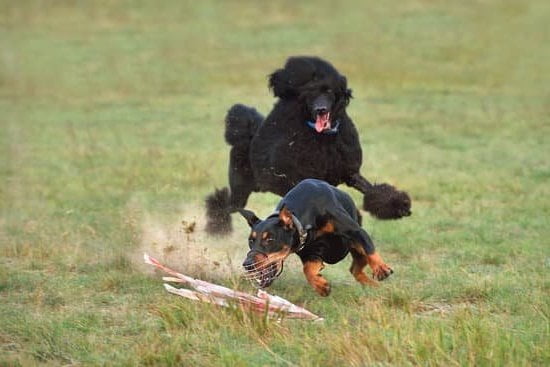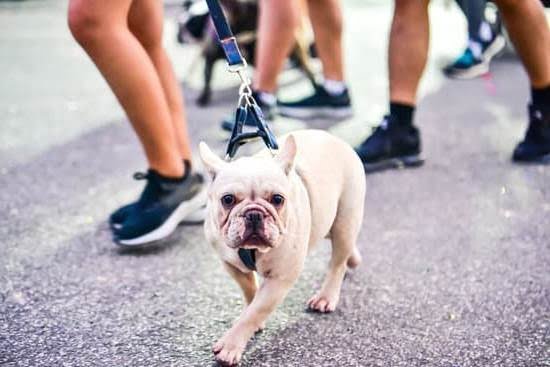How to train your dog with chickens is a fascinating and challenging endeavor that can yield numerous benefits for both you and your beloved pet. From fostering discipline and obedience to enhancing the overall safety of your chicken coop, this unique form of training holds immense potential for canine development. In this comprehensive guide, we will explore the various aspects of training your dog with chickens, from getting started and basic obedience training to advanced techniques and managing potential challenges.
When it comes to keeping both chickens and dogs in harmony, proper training is essential. As such, understanding the potential benefits of integrating chickens into your dog’s training regimen is crucial.
Not only does it provide an opportunity for your dog to learn valuable skills and behaviors, but it also promotes a sense of responsibility and empathy towards other animals. Through the following sections, we will delve into the step-by-step process of preparing your furry companion for chicken training and establishing a positive association between them.
By following these effective strategies for training your dog with chickens, you can create a harmonious environment where both pets can coexist peacefully. Beyond fulfilling their natural instincts and providing mental stimulation, this unique form of training sets the stage for long-term success in managing your dog’s behavior around other animals. Join us on this enlightening journey as we uncover the transformative impact that chicken training can have on your beloved canine companion.
Getting Started
Preparing your dog for chicken training is an essential first step in the process of ensuring a safe and successful interaction between your dog and chickens. Before beginning any training, it is important to make sure that your dog has a foundational understanding of basic obedience commands such as “sit,” “stay,” and “leave it.” This will provide a framework for your dog to follow when learning how to interact with chickens.
It is also crucial to assess your dog’s natural prey drive and predatory instincts before introducing them to chickens. Some breeds may have a higher prey drive than others, making it more challenging for them to coexist peacefully with chickens. Understanding your dog’s breed characteristics will help you anticipate potential challenges and tailor your training approach accordingly.
Before introducing your dog to real chickens, consider using dummy or stuffed chickens as a starting point for training. This can help your dog become familiar with the sight, smell, and presence of chickens in a controlled environment before interacting with live ones. Gradually acclimate your dog to the presence of these props, using positive reinforcement techniques such as treats and praise to create a positive association with chickens.
Once you have set the foundation for preparing your dog for chicken training, it’s time to establish clear boundaries and expectations for their behavior around chickens. Implementing consistent rules and reinforcing positive behaviors will be crucial in shaping your dog’s behavior as they progress through the training process of how to train your dog with chickens.
Building a Positive Association
Creating a Safe Space
Before introducing your dog to chickens, it’s important to create a controlled environment where both animals feel safe and secure. This can be achieved by using a leash or harness for your dog and ensuring that the chickens are confined within a sturdy coop or pen. By controlling the initial interactions between your dog and the chickens, you can prevent any potential accidents or altercations.
Supervised Encounters
When introducing your dog to chickens for the first time, it’s crucial to supervise their interactions closely. Allow your dog to approach the chickens while on a leash, observing their body language and behavior. Use positive reinforcement techniques such as treats and praise to encourage calm and gentle behavior from your dog. Gradually increase the duration of these supervised encounters as your dog becomes more comfortable around the chickens.
Consistent Exposure
Consistency is key when building a positive association between your dog and chickens. Regular exposure to the presence of chickens in a controlled environment will help desensitize your dog to their presence and reduce any instinctual prey drive. It’s important to remain patient and persistent during this process, as every dog will progress at their own pace in learning how to train your dog with chickens.
By taking these steps to introduce your dog to chickens in a controlled environment, you can lay a solid foundation for successful training outcomes. Remember that each dog is unique, so be prepared to tailor your approach based on your pet’s individual temperament and behavior tendencies. With patience, persistence, and positive reinforcement, you can effectively train your dog to coexist peacefully with chickens.
Basic Obedience Training
Training your dog to listen and respond to commands around chickens is an essential part of ensuring their safety and the safety of the chickens. This training can also help in preventing any unnecessary stress or harm caused to the birds. Here are some basic obedience training techniques to teach your dog how to behave around chickens:
- Start with basic commands: Before introducing your dog to chickens, make sure they have a solid understanding of basic obedience commands such as “sit,” “stay,” “come,” and “leave it.” These commands will form the foundation for their behavior around chickens.
- Use positive reinforcement: When teaching your dog to obey commands, use positive reinforcement techniques such as treats, praise, and toys. Associate each command with a specific action, and reward them when they comply.
- Gradual exposure to chickens: Once your dog is responsive to basic commands, gradually introduce them to the presence of chickens in a controlled environment. Use a leash or secure enclosure to ensure that both your dog and the chickens are safe during this introduction phase.
It’s important to remember that every dog is different, so progress may vary from one individual to another. Some dogs may take longer to adjust to being around chickens while others may pick up on obedience training quickly. Patience and consistency are key when teaching your dog how to behave around these birds.
Implementing these basic obedience training techniques will lay the groundwork for further advanced training exercises as you continue with the process of integrating your dog into a chicken-friendly environment. By following these steps, you’ll be on your way towards successfully training your dog with chickens.
Advanced Training Techniques
When it comes to training your dog with chickens, advanced training techniques can be crucial in ensuring that your dog’s behavior around poultry is safe and reliable. These specialized exercises go beyond basic obedience training and focus on specific behaviors that are essential for the successful coexistence of dogs and chickens. Here are some advanced training techniques to consider when teaching your dog to interact with chickens.
One important aspect of advanced training is desensitizing your dog to the presence of chickens. This involves gradually exposing your dog to the sight, sound, and smell of chickens in a controlled environment. Start by keeping your dog on a leash and allowing them to observe the chickens from a distance.
Over time, gradually decrease the distance between your dog and the chickens while monitoring their reactions. This gradual approach helps your dog become accustomed to the presence of chickens without feeling overwhelmed, reducing the likelihood of any negative responses.
Another advanced technique is impulse control training, which teaches your dog to resist the natural urge to chase or harass chickens. Using positive reinforcement such as treats or toys, you can train your dog to ignore or stay calm around the chickens, even when they move or make noise. This requires patience and consistency but can ultimately prevent any unwanted behavior towards the poultry.
Additionally, implementing supervised interaction sessions can be beneficial for both your dog and the chickens. By closely supervising these interactions, you can intervene if necessary and ensure that both parties are behaving appropriately. Gradually increasing the duration of these supervised sessions can help build trust between your dog and the chickens while reinforcing positive behavior.
Implementing these specialized exercises is essential for ensuring that your dog’s behavior around chickens is consistent and reliable. By taking a proactive approach to advanced training techniques, you can set up both your dog and your feathered friends for a harmonious coexistence.
Managing Potential Challenges
Training your dog with chickens can be a rewarding and beneficial experience, but it may also come with challenges along the way. It’s important to be prepared for potential obstacles and setbacks in the training process in order to address them effectively and ensure success. Here are some common challenges you may encounter when training your dog with chickens, along with tips on how to manage them:
1. Prey Drive: Many dogs have a natural prey drive, which can make it challenging for them to be around small animals like chickens without wanting to chase or even harm them. To address this, it’s important to work on desensitizing your dog to the presence of the chickens gradually. Start by keeping the dog on a leash and using positive reinforcement techniques such as treats or toys to redirect their attention away from the chickens.
2. Fear or Anxiety: Some dogs may feel anxious or fearful around chickens, especially if they are not used to being around these animals. To help your dog overcome this fear, introduce them to the chickens in a calm and controlled environment. Use praise and rewards to build a positive association with the chickens, and gradually increase exposure over time.
3. Lack of Focus: Dogs that are easily distracted may have trouble focusing on commands and tasks when there are chickens present. It’s important to work on building a solid foundation of basic obedience skills before introducing your dog to chickens. Practice commands such as “sit,” “stay,” and “leave it” in a distraction-free environment, and then gradually introduce the presence of chickens while continuing to reinforce these commands.
By being aware of these potential challenges and taking proactive steps to address them, you can set your dog up for success in their training with chickens. Remember that every dog is unique, so it’s important to be patient and flexible in your approach as you work towards achieving positive behavior around chickens.
Reinforcement and Consistency
Creating a Reinforcement Schedule
Once your dog has been introduced to chickens and has begun responding positively to basic commands around them, it is important to establish a reinforcement schedule to maintain progress. This schedule should include regular training sessions with chickens, as well as daily reinforcement of good behavior. Consistency is key in this process, so be sure to stick to the schedule to ensure that your dog retains the positive associations they have formed with the chickens.
Implementing Positive Reinforcement Techniques
Positive reinforcement is an effective method for maintaining progress in your dog’s training with chickens. Whenever your dog displays good behavior around the chickens, be sure to praise them and offer rewards such as treats or verbal affirmations. This will help reinforce their positive association with the chickens and encourage them to continue behaving appropriately.
Monitoring and Adjusting the Routine
As you work on maintaining progress in your dog’s training with chickens, it is important to monitor their behavior closely and make adjustments to the routine as needed. If you notice any signs of regression in their behavior, take a step back and revisit earlier training steps before moving forward again. Additionally, be mindful of any changes in your dog’s environment or routine that may impact their interactions with the chickens, and make necessary adjustments accordingly.
Celebrating Success
As you continue to train your dog with chickens, it is important to celebrate the milestones and achievements in your dog’s journey. Recognizing and acknowledging progress is crucial in reinforcing positive behavior and maintaining motivation for both you and your dog.
One way to celebrate success is by setting specific goals for your dog’s chicken training. Whether it’s mastering a certain command around the chickens or exhibiting calm behavior in their presence, having clear objectives can provide a sense of direction and accomplishment as you work towards them.
Another way to acknowledge achievements is through positive reinforcement. When your dog displays the desired behavior around the chickens, be sure to praise and reward them accordingly. This can be done using treats, verbal praise, or a favorite toy, creating a positive association with their good behavior.
It’s also important to remember that every dog progresses at their own pace. Some dogs may take longer to adjust to being around chickens, while others may quickly grasp the training concepts. By recognizing and celebrating each small achievement along the way, you are building confidence in your dog and strengthening the bond between you both.
| Training Milestone | Celebration |
|---|---|
| Mastering “Leave It” command around chickens | Verbal praise + treat reward |
| Sitting calmly near chickens without reacting | Special playtime with favorite toy |
Conclusion
In conclusion, training your dog with chickens can have a transformative impact on both your dog and your flock. By introducing your dog to chickens in a controlled environment and implementing basic obedience training, you can create a positive association between the two animals. This not only ensures the safety of your chickens but also provides mental stimulation for your dog.
As you progress to advanced training techniques and address potential challenges, you will establish a routine of reinforcement and consistency that will maintain progress in your dog’s behavior around chickens. This not only benefits your flock but also strengthens the bond between you and your dog.
Overall, training your dog with chickens is a rewarding journey that requires patience, dedication, and understanding. As you celebrate milestones and achievements in this training process, you will witness the transformative impact it has on both your dog’s behavior and the harmony within your household. With the proper guidance and techniques, you can successfully train your dog to coexist peacefully with chickens while enhancing their overall well-being.
Frequently Asked Questions
How Do I Train My Dog to Be Around Chickens?
Training your dog to be around chickens requires patience and consistency. Start by teaching basic obedience commands and gradually introduce the chickens in a controlled environment. Use positive reinforcement to reward calm behavior around the chickens.
How Long Does It Take Dogs to Get Used to Chickens?
The time it takes for dogs to get used to chickens can vary depending on the individual dog. Some dogs may adjust quickly within a few days, while others may take several weeks or even months. It’s important to be patient and not rush the process.
How Do I Stop My Dog From Attacking My Chickens?
To stop your dog from attacking your chickens, you must address the behavior immediately. Supervise interactions between your dog and chickens at all times, and use commands like “leave it” or “stay” to correct any aggressive behavior. Consistent training and positive reinforcement are key in preventing attacks.

Welcome to the blog! I am a professional dog trainer and have been working with dogs for many years. In this blog, I will be discussing various topics related to dog training, including tips, tricks, and advice. I hope you find this information helpful and informative. Thanks for reading!





